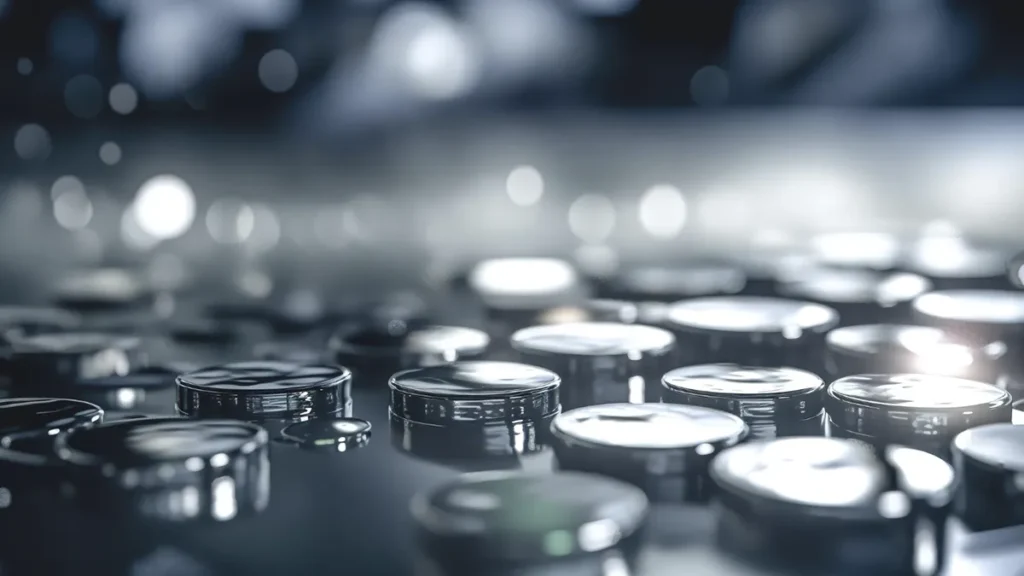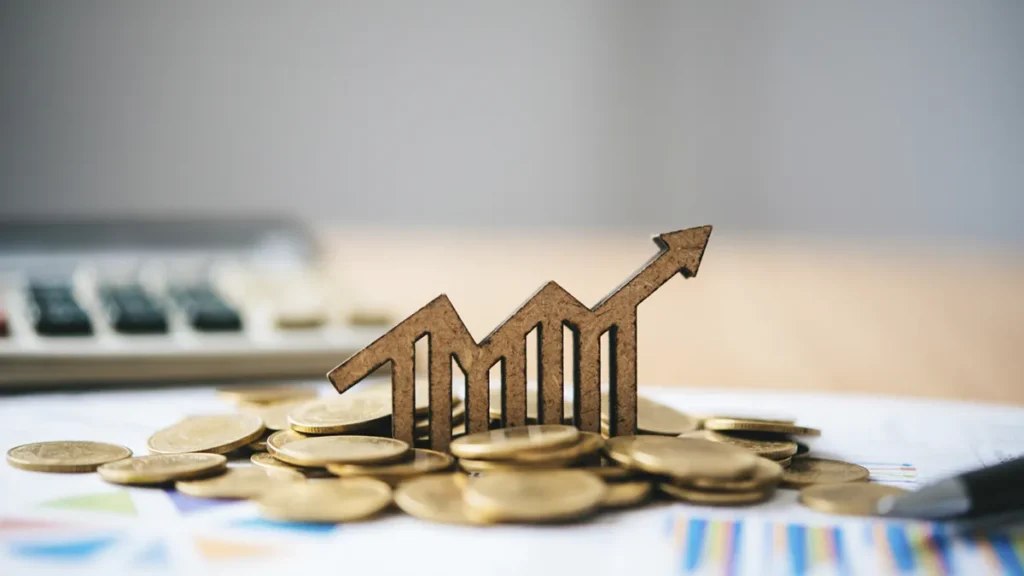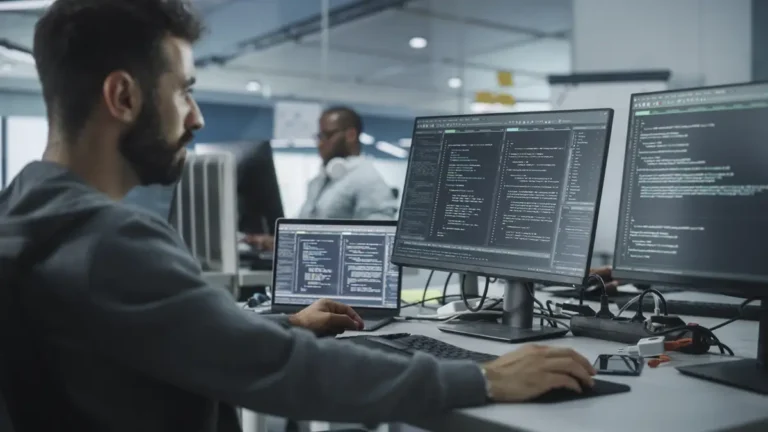Lithium Refining Business – A Complete Guide for 2025
No wonder why the global lithium market is booming. In 2020, global lithium demand was around 74,000 tonnes, with just 30% coming from electric vehicles and energy storage. Fast forward to 2040, and demand is expected to hit 1.16 million tonnes, with nearly 90% driven by these fast-growing sectors.
This massive growth opens up a golden window of opportunity, especially for entrepreneurs looking to enter the lithium refining business. As the world shifts toward clean energy and electric mobility, the need for refined, battery-grade lithium is rising sharply.
For startups, this means now is the time to get in, understand the landscape, and build a business around one of the most in-demand resources of the future.
This guide covers everything you need to know about starting a lithium refining business, including:
- Market opportunities (EVs, energy storage)
- Lithium extraction methods (brine vs. hard rock)
- Step-by-step refining process
- Costs, regulations, and more
But, first let’s understand what this business actually is and why it is called the white gold of the 21st century.
Lithium Refining Business and Why it is Called the White Gold of the 21st Century
Raw Lithium that is obtained from the earth is first processed to be turned into battery-grade lithium carbonate or lithium hydroxide. These purified lithium forms help produce batteries mainly found in electric cars, renewable systems, and portable electronics.
When comparing Lithium batteries to lead ones, Lithium gives better performance along with less environmental hazards. What’s more, it is applied in many sectors such as electric vehicle batteries, smartphones, laptops, and so on. So, it is known as the twenty-first century’s white gold. The global market for lithium is estimated to grow and require 3-4 million tonnes every year by 2030.
Still, there are not enough refineries to supply the rising demand.This makes lithium not just very valuable, but also an important resource in the global competition for clean energy leadership.
Lithium Lewis Structure: Why It’s So Reactive
From a chemistry standpoint, lithium has one valence electron. Its Lewis structure is simple: Li•
This makes it highly reactive and perfect for ion exchange in batteries, which is why it’s favored in modern battery technology.
Understanding the Lithium Value Chain

From extraction to refining, here is the process that every entrepreneur must know if they want to start a successful lithium refining business.
| Stage | Description |
| Mining | brine pools, spodumene ore, and clay deposits are main source of Lithium |
| Processing | The raw lithium is mixed, combined, and chemically processed to reach refined form. |
| Refining | Concentrated lithium goes through treatment to become lithium carbonate or lithium hydroxide that is needed for batteries. |
Each step in the lithium production process needs technical skills. This business requires a lot of investment. Additionally, it is necessary for businesses to comply with strict plans for the environment and safety.
If you want to do well in this field, you must learn how to handle everything involved. This is how you can create a reliable and solid business for lithium refining.
This article will now explain the process of lithium mining in depth.
How Is Lithium Mined?
Lithium is extracted from three main sources. Each source has its own process, cost and environmental impact.
1. Lithium Brine Extraction
Lithium brine extraction is used in salt flats. Principally, Chile and Argentina rely on this approach to mine lithium.
They pump lithium-rich brine from underground pools to the surface of the Earth. Then it is left to evaporate naturally over several months.
- It helps save money and uses less power.
- On the downside, it takes a lot of time and uses up a lot of water, which can cause more problems to nature in dry regions.
2. Hard Rock Mining
This method is usually used in Australia where they extract lithium from spodumene ore using the traditional mining techniques.
- This method is faster than brine extraction.
- But it requires more energy and can have a bigger environmental footprint.
3. Clay Extraction
This is relatively a newer method and is still in the development phase. In Nevada (USA) and some parts of China, clay extraction projects are going on.
- As Lithium is found in clay deposits, new technologies should be explored to extract it economically and at scale.
- Though it seems promising, not yet widely commercialized.
The Refining Process From Raw Lithium to Battery-Grade

Once it is extracted from Earth, Lithium undergoes several complex processes and refinements to be used in batteries.
a. How Lithium Carbonate and Lithium Hydroxide differ
Raw lithium is converted into lithium carbonate or lithium hydroxide through lithium carbonate refining or lithium hydroxide production. The process depends on the intended application.
Lithium carbonate is mostly used in Lithium Iron Phosphate batteries. On the other hand, lithium hydroxide is preferred for Nickel Manganese Cobalt batteries due to its higher energy density. The refining method depends on which end product is required.
b. Common Refining Processes
Here are the lithium processing steps that are usually involved in the transformation of metal.
- Calcination
- Acid leaching
- Crystallization.
For lithium carbonate refining, CO₂-based softening is often used to enhance purity.
Newer methods like electrodialysis and membrane-based systems are relatively newer and are utilized for cleaning and more efficient alternatives.
c. Direct Lithium Extraction
Direct Lithium Extraction is a process in which membranes and filters are used to extract lithium more efficiently. Some of the pros include:
- quicker extraction
- less water required
- less harm to the environment.
Now, if you wish to start a lithium refining business, here’s what you should do.
Step-by-Step Guide to Starting a Lithium Refining Business

There are important stages a business must complete, such as research, planning, and actual lithium refining activities. The process can be broken down into these few steps:
1. Market & Competitor Research
Start by understanding the industry landscape. Identify demand gaps, analyze key competitors, and study emerging trends to position your business strategically.
2. Raw Lithium Sourcing
Decide where and how you’ll obtain raw lithium. Choose between brine, hard rock, or clay sources, each has different logistics, costs, and geopolitical risks to consider.
3. Select Refining Technology
Choose the right refining method based on your resources and goals. Options include traditional chemical processes or advanced methods like Direct Lithium Extraction (DLE) and AI-driven optimization.
4. Facility Planning
Design your refinery layout carefully. Plan for material intake, refining zones, storage, waste treatment, and distribution facilities to ensure smooth operations.
5. Regulatory Approvals
Be sure to comply fully with all the regulations for the environment and safety. During work in the U.S., follow the requirements from EPA, OSHA, and DOE. As a supplier to the EU, you need to follow REACH and the environmental directives.
6. Developing a Financial Plan
Find the necessary funds for capital expenses, since these costs can be $50 million to $500 million, depending on how large and advanced the project is. Take a look at green bonds, subsidies from the government, and options for venture capital.
7. Find and Hire Skilled People to Work with You.
Create a workforce made up of engineers, operators, legal professionals, and compliance staff to take care of daily activities as well as following rules.
8. Use New Ideas to Make Your Company Grow.
Growing companies should start using digital twins, automation, and live monitoring to boost their efficiency and stay ahead of others in the industry.
Although the technology and operations of a lithium business must be strong, the site and location of your business is equally significant. Geopolitics have a strong effect on lithium supplies worldwide, as the majority of refining is performed by only some countries.
Geopolitics and the refining of Lithium
Most lithium in the world today is refined in China, leading to dependence on their supply chain and chains around the world. For this reason, different countries are working swiftly to build up their own refining sector.
Key Trends to Watch:
- U.S. is pushing to localize lithium extraction and refining for energy independence.
- EU is investing in a circular economy and battery self-sufficiency strategies.
- South American nations, rich in lithium reserves, are tightening export regulations to capture more value locally.
For new entrants, this means that building refining capacity in the U.S. or allied countries isn’t just good for business, it’s a move aligned with national security and future global demand.
Environmental Impact of Lithium Refining
As demand for lithium rises, so does concern about its environmental footprint. It’s important to understand both the risks and the sustainable solutions shaping the future of refining.
Environmental Risks:
- Brine extraction consumes large amounts of water, especially in already dry regions.
- Hard rock mining leads to significant carbon emissions.
- The refining process generates chemical waste that must be properly managed.
Greener Solutions:
- Direct Lithium Extraction significantly reduces water consumption.
- Solar-powered refining plants help cut down on emissions.
- Closed-loop water systems recycle water to minimize waste.
Nowadays, corporations are required to adopt sustainability, as it is becoming mandatory law around the globe.
Investment & Financial Planning

Starting a lithium refining business is costly at the beginning, but the payback can be excellent since demand is rising and governments are backing it.
Key Financials:
- Initial CapEx ranges from $50M to $500M, depending on the lithium plant scale and technology.
- ROI for mature operations typically falls between 20–35%.
- Break-even is usually achieved within 3–5 years.
Many governments are now offering support to lithium refining ventures. Some provide tax incentives, subsidies and loans on low-interest rates. This is how governments are encouraging newcomers to enter the lithium refining business.
Lithium Recycling & Circular Economy
Refining lithium isn’t only about extracting it from the earth, recycling used lithium-ion batteries is becoming just as important. In fact, it’s a key part of building a sustainable and future-proof refining business.
Why It Matters:
- Reduces dependence on mining and raw material imports
- Lowers production costs and environmental impact
- Supports ESG goals and regulatory compliance
Forward-thinking entrepreneurs are exploring hybrid facilities that combine traditional refining with battery recycling, creating new business opportunities in the circular economy.
Technological Innovations in Lithium Refinement
Because of the industry’s growth, we are seeing new technologies influence the way lithium is refined. These new methods not just save time and keep the environment safe, but also work more efficiently.
Lithium can be extracted in an environmentally friendly way by these newer and more practical techniques.
- Direct Lithium Extraction: A scalable, eco-friendly alternative to traditional methods
- AI-powered plant management: Boosts operational efficiency and reduces human error
- Digital twins: Simulate and optimize yield in real time
Innovation is helping lower costs, reduce environmental impact, and open doors for smaller refineries to compete and scale.
Sourcing Raw Lithium: Country Breakdown
Knowing the source of lithium and the risks involved matters a lot for shaping a secure supply line. The biggest lithium suppliers in the world are listed here.
- In Chile and Argentina, there are a lot of brine reserves, but stress over water and environmental problems could stop their growth.
- Australia is the country with the biggest hard-rock lithium production, as well as a steady political climate and effective ways for exporting.
- China processes the most oil out of any country, though it faces many challenges in trade and politics.
- Bolivia: Despite having plenty of resources, ongoing political disturbances and rules that are not set in stone cause problems.
- In the United States, federal money and policies help to drive more domestic extraction and refining of oil.
The industry is driven by major players in the market. The main leaders in this area are Albemarle, Ganfeng Lithium, and Arcadium Lithium, which used to be Rio Tinto. These startups, ElectraLith, EnergyX, and Lilac Solutions, are inventing brand-new extraction and refining systems.
Emerging Hotspots
Regions like Iberia, Argentina’s Lithium Triangle, and parts of the U.S. Southwest are rapidly expanding their lithium projects, shifting the global sourcing map.
How to Stay Competitive as a Startup
Though the lithium industry is ruled by giants, startups can still compete by paying attention to innovation, specialization and agility. For instance,
- Specializing in pure lithium for high-end applications
- Partnering with niche battery technology companies
- Launching micro DLE plants close to mining operations to cut logistics costs and boost efficiency
Licensing & Compliance (By Region)
It is necessary to learn about the local regulations before setting up a refining operation in the field of lithium, as the requirements can influence both your progress and how much rests its timelines and monetary costs.
- In the United States, there is a need to comply with EIS, OSHA, EPA, and DOE rules.
- Businesses that operate in Europe must observe REACH standards, pass the criteria set by ESG audits, and respect strict emissions requirements.
- Latin America: Involves community approval, respect for water rights, and navigating national lithium policies.
Tip: Always consult local legal experts to avoid costly missteps and delays.
Gaining Social License to Operate
Your business won’t survive without community trust.
- Respect indigenous rights
- Hire locally
- Invest in community infrastructure
- Share water and land resources transparently
Conclusion: The Future of Lithium Refining
As lithium demand soars, the world needs more refining capacity—and fast. The opportunity is massive for those who can:
- Secure sustainable raw material
- Implement scalable refining technology
- Navigate compliance and capital hurdles
Whether you’re a startup or investor, the lithium refining business offers high growth potential, if done right.
For more informative blog, posts, and updates, join Founding Startups’ social media platforms.






